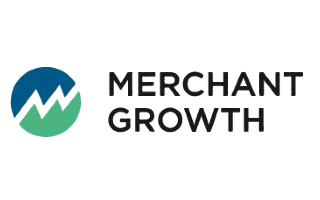Promoted for
Fast Financing

To make comparing even easier, we came up with the Finder Score. Interest rates, fees and features across 10+ business loans are all weighted and scaled to produce a score out of 10. The higher the score the better the loan—simple.
Inventory financing is designed to pay your supplier directly on your behalf, allowing you to meet your financial obligations while keeping your shelves stocked and your business’s reputation intact.
Promoted for
Fast Financing

Promoted for
Term Loans

Promoted for
Flexible Loans

Inventory financing is a line of credit or short-term loan that a business can use to buy the products it sells. Any inventory that you purchase becomes collateral for the loan, protecting the lender against default. If you’re not able to repay the loan, the lender can seize and sell the products to satisfy the debt.
Here’s a breakdown of how it works:
Depending on the lender, you may be able to apply for up to $1 million or more. The repayment period is determined by how long it would take to sell your inventory.
A shorter repayment term may mean a higher interest rate, but it’s usually a small increase. It could make financial sense to choose the shortest term you can afford because paying interest on a small loan over a longer period will eat away at your cash flow.
Generally, inventory financing is used by manufacturers of consumer products and auto dealers that have large amounts of money tied up in inventory. This type of financing is especially good for businesses with international suppliers because sometimes there are delays between paying a supplier and receiving the goods.
Michael and Jane want to greatly expand their liquor store, so they can offer a wider range of high end selections. They can cover the cost of renovations, shelving and installation, which will be around $50,000.00. However, they need to get a business loan to pay for their new inventory, which will cost another $50,000.00 upfront. With good personal and business credit scores and, and using their store property as security, Michael and Jane get approved by an online lender for a 4-year loan with an interest rate of 7.25%.
| Cost of expanding the liquor store | $100,000.00 |
| Loan type | Business loan |
| Loan amount | $50,000.00 |
| Interest rate (APR) | 7.25% |
| Loan term | 3 years |
| Additional fees | Origination fee of 3.00% ($1,500.00) |
| Monthly payment | $1,549.58 |
| Total loan cost | $55,784.88 |
*The information in this example, including rates, fees and terms, is provided as a representative transaction. The actual cost of the product may vary depending on the retailer, the product specs and other factors.
There are a few questions you can ask yourself before applying to ensure it’s the right decision:
Lenders want to see that you’re able to make repayments, so you need to prove that your business is in decent shape financially. While you don’t have to put up collateral if applying for an unsecured inventory loan, your business must meet some standard eligibility requirements:
Inventory financing can be a useful option to keep your business moving if your cash flow relies on maintaining lots of inventory at once. Make sure you compare your loan options before you selecting a lender to ensure you get the right terms for your business’s needs.
Find out how we rate business loans in our methodology.
Your guide to features, rates and eligibility requirements of small business loans from Advance Funds Network.
Your guide to the top small business grants in Canada, including funding amounts available and eligibility criteria.
Your guide to the pros, cons, eligibility criteria and application process of Scotiabank’s business loans.
Find out where to get a business loan with bad credit from reputable lenders.
Find out the minimum revenue and time in business requirements that you’ll need to meet to qualify for a $500,000 business loan.
How to spot and avoid business loan scams and find legitimate business lenders.
Learn how equipment financing works and how to choose an equipment loan for your business.
Compare 10 business lines of credit from trusted lenders and learn how to find funding that suits your business.
Explore the best small business loans in Canada for startups, fast funding, flexibility, bad credit and more.